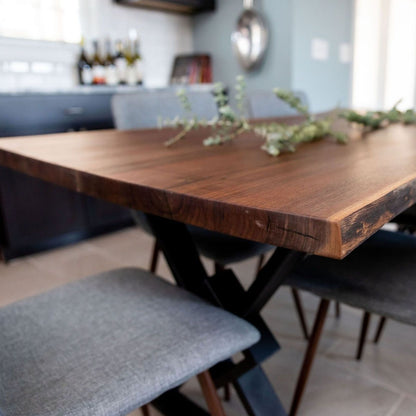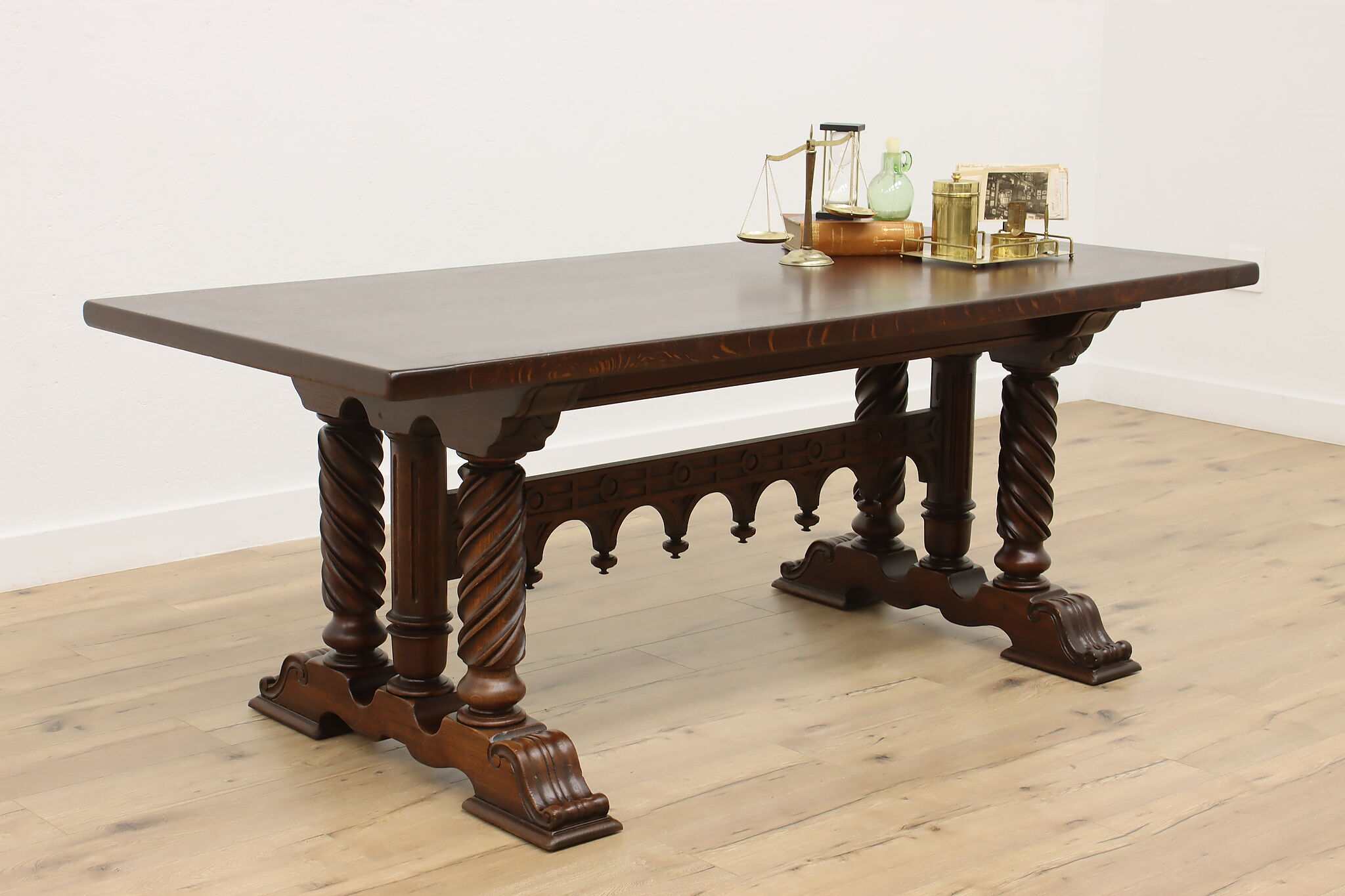Enhance Your Dining Room with Unique and Modern Dining Room Table Legs
Enhance Your Dining Room with Unique and Modern Dining Room Table Legs
Blog Article
From Conventional to Modern: Find the Perfect Dining-room Table Legs for Your Design
The selection of eating space table legs plays a critical duty in specifying the general character of your room, connecting the space in between standard craftsmanship and modern aesthetics. While timeless designs such as cabriole and transformed legs evoke a sense of classic class, contemporary designs like hairpin and geometric options offer a possibility for striking visual rate of interest. Assessing the right equilibrium between these styles needs a nuanced understanding of your existing decor and individual taste. As you consider these aspects, the concern remains: exactly how can you flawlessly integrate these diverse leg styles to create a harmonious dining experience?
Understanding Table Leg Styles
The variety of dining space table leg designs can considerably affect both the looks and capability of the room. Each leg design adds distinct aesthetic aspects and practical functions, dealing with varied design preferences and usage demands. Recognizing these styles is important for choosing the ideal dining table that lines up with your total interior design vision.
For example, conical legs supply a clean, traditional look that can boost a room's style, while pedestal bases offer security and make best use of legroom, making them ideal for smaller sized spaces. Barrette legs, a characteristic of mid-century modern-day style, present an industrial style, allowing for an airy, open feeling. Trestle legs evoke rustic appeal, offering durable support and a feeling of timelessness.
Furthermore, the selection of products plays a substantial duty. Wooden legs can bring warmth and texture, whereas metal options frequently communicate a streamlined, contemporary vibe. Inevitably, understanding table leg designs is vital for producing a natural dining location that reflects individual style while guaranteeing practicality and convenience. By thoughtfully thinking about these aspects, you can improve both the visual and useful appeal of your eating space.
Typical Table Leg Options
When selecting dining-room table legs, typical alternatives commonly embody ageless elegance and craftsmanship. These designs show an abundant heritage and a commitment to high quality, making them perfect for those that appreciate classic looks.
Among one of the most legendary traditional leg designs is the cabriole leg, identified by its graceful rounded shape. This style often includes decorative carvings and is most commonly discovered in Queen Anne and Chippendale furnishings. Another popular choice is the turned leg, which flaunts a collection of smooth, rounded forms that offer a traditional look while preserving stability.
Furthermore, the straight leg, while easy, uses a basic and durable framework that can blend seamlessly with a variety of tabletop styles. For those attracted to ornate describing, claw-and-ball feet legs stimulate a sense of magnificence and can function as a stunning prime focus in any type of dining room.
Lastly, pedestal bases, although not purely legs, supply an alternative conventional choice that enables sufficient legroom and can be beautifully carved. Each of these standard leg designs adds to the total atmosphere of an eating space, weding function with visual allure.

Modern Table Leg Layouts
Modern table leg layouts use a varied variety of styles that emphasize clean lines and cutting-edge products. These styles usually prioritize performance while functioning as striking focal factors within an eating room. Minimal aesthetic appeals are common, with legs crafted from materials such as steel, glass, and crafted timber, which add to a modern and ventilated feel.
One prominent layout is the barrette leg, characterized by its slim, tapered structure that gives stability without frustrating the tabletop helpful resources (dining room table legs). This design is often located in mid-century modern-day furniture and can easily enhance various eating table shapes. An additional trend is the usage of geometric shapes, where legs may handle asymmetrical or angular kinds, including aesthetic interest and a touch of artistry

Blending Designs for One-of-a-kind Rooms
Usually, homeowners seek to produce unique dining areas that reflect their personal style by mixing different style elements. This technique permits the unification of diverse looks, causing an unified yet distinctive atmosphere. For example, matching a rustic wood table with streamlined, modern-day steel legs can create a captivating contrast that raises the room's total charm.
Additionally, incorporating vintage table legs with contemporary table tops can evoke a sense of history while maintaining a modern sensibility. Such combinations not just display individual preference however likewise motivate imagination, enabling homeowners to curate a space that feels both individual and welcoming.
Shade plays a critical function in this blending procedure; selecting table legs that match or comparison with the existing color design can boost aesthetic interest. Whitewashed legs can soften the boldness you could look here of a dark table surface, creating a balanced visual.
Tips for Selecting the Right Legs
Choosing the right table legs is crucial for attaining both performance and visual allure in your dining room. Begin by considering the total style of your area. Conventional settings profit from legs that include detailed makings or turned styles, while contemporary spaces might call for smooth, minimalist styles.
Next, evaluate the height and security of the legs. dining room table legs. Standard table vary between 28 to 30 inches in height, so make certain the legs match this measurement for comfort. Additionally, robust products, such as hardwood or steel, can enhance stability and long life
Assess the leg form too-- options include right, tapered, or pedestal styles. Straight legs offer a timeless appearance, while conical legs can add a touch of beauty. Pedestal bases offer sufficient legroom and are suitable for smaller sized rooms.
Verdict
In recap, choosing the suitable dining space table legs calls for cautious factor to consider of both modern-day and typical styles. Standard choices such as cabriole and transformed legs supply timeless beauty, while modern-day styles like barrette and geometric shapes offer a contemporary touch. By balancing leg design, height, and product with the overall decoration, a cohesive and welcoming atmosphere can be attained. Inevitably, the selected table legs ought to reflect the preferred visual, improving the eating experience within the room.
The range of dining area table leg styles can significantly influence both the aesthetic appeals and functionality of the space. Ultimately, recognizing table leg designs is crucial for creating a natural eating location that mirrors individual style while making certain functionality and convenience.One of the most legendary traditional leg styles is the cabriole leg, identified by its graceful bent form. Straight legs offer here are the findings a classic look, while conical legs can include a touch of sophistication.In summary, selecting the perfect eating area table legs calls for mindful factor to consider of both standard and contemporary designs.
Report this page